Exceeding the project budget is one of the biggest nightmares for every project manager. Whether it’s a minor cost increase or a huge budget blowout, it could lead to delays and strained relationships with stakeholders.
The good news is that a cost overrun is often predictable and preventable.
Let’s explore what may lead to cost overruns and, more importantly, how you can manage or even avoid them altogether.

In this article:
What is a cost overrun?
In project management, a cost overrun (also known as a cost increase or a budget overrun) means that the actual expenses of a project have surpassed the estimated project costs.
For example, let’s say a company is building a new office space with an initial budget of $3 million and a completion period of 18 months.
During this construction project, 2 unexpected issues arise:
- Bad weather causes delays, extending the project timeline by 2 months and raising equipment and labor rental costs by $150,000, and
- New safety regulations are suddenly introduced, requiring design changes and adding $300,000 to the original project budget.
The cost overrun formula goes like this:
Actual Expenses – Budgeted Amount = Cost Overrun Amount
In our example, this results in a budget overrun of $450,000, along with an updated timeline of 20 months total.
Besides hindering the project’s success, this could affect the company’s operations, cause further delays, and impact other investments.
How to avoid cost overruns
You can prevent a cost overrun by relying on precision, proactiveness, meticulous monitoring, and transparent communication.
Here’s how to achieve this.
1. Make initial estimates as accurate as you can
By estimating project costs as precisely as possible, as early as possible, you will:
- Set realistic expectations,
- Prepare guidelines for making informed decisions, and
- Enhance confidence in the project’s management among the stakeholders.
In contrast, making inaccurate project estimates concerning your budget will likely lead to:
- Project delays,
- Lower-quality outcomes,
- Stakeholder dissatisfaction, and
- Increased stress among your team members.
There are different project budgeting methods you can use, depending on the project type. Still, what matters the most here is:
- Defining project objectives and requirements,
- Calculating the cost of each task (including materials, staffing, equipment, etc.), and
- Setting aside some emergency funding in case of unexpected costs.
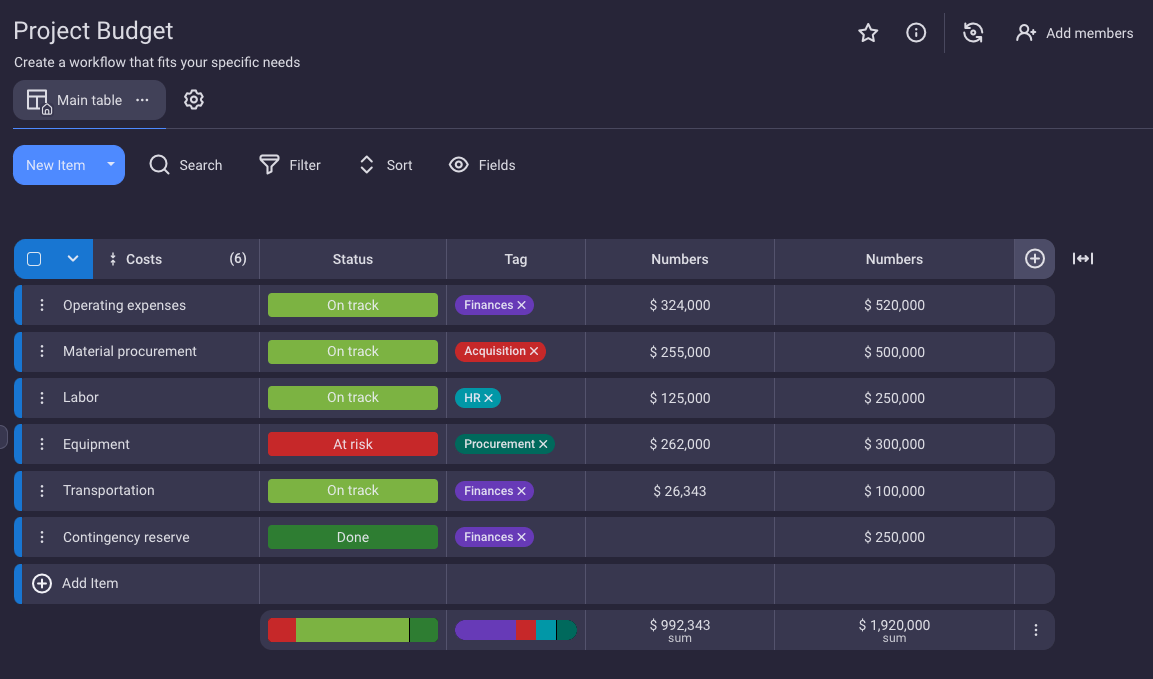
Manage your project budget with Plaky
2. Use scenario planning to prevent issues
Uncertainties can arise even when you have the most detailed project plan, but that doesn’t necessarily mean project failure.
Identifying the main uncertainties before they become reality and coming up with solutions — a technique known as scenario planning — makes your project more resilient and your team extra vigilant and productive.
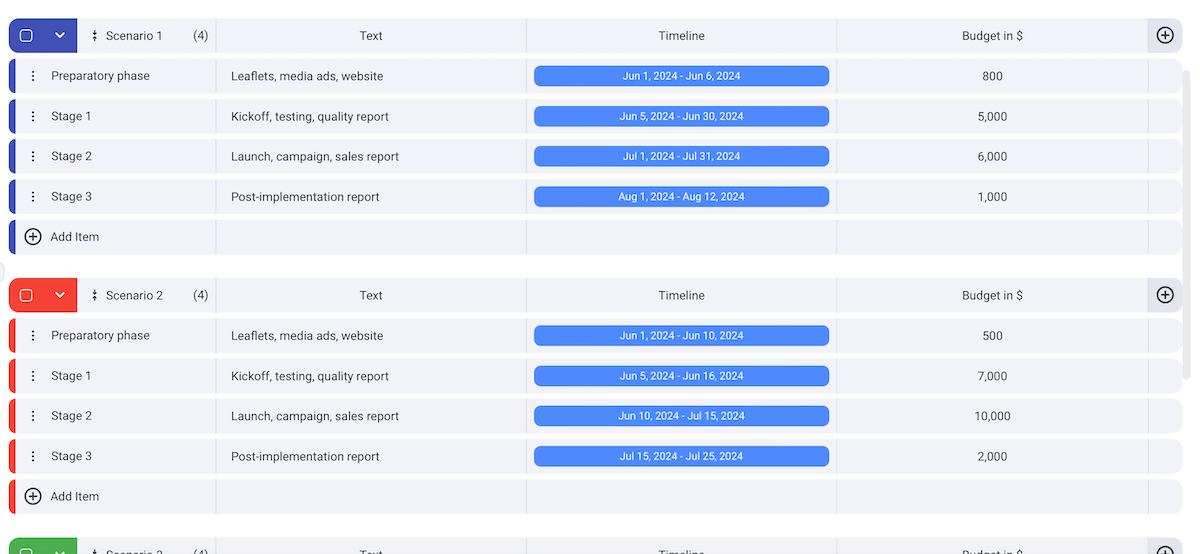
Scenario planning can help you avoid cost overruns by:
- Highlighting challenges that could impact costs,
- Assessing how the budget holds up under different adverse conditions,
- Reducing the chance of unforeseen expenses, and
- Preparing the team to adapt quickly to budget changes.
For instance, scenario planning means considering that receiving a product from a vendor earlier than scheduled could lead to expedited shipping fees, currency exchange rates may affect the initial estimates when working with international suppliers, and so on.
Plan project scenarios in Plaky
3. Monitor project progress
Regular progress monitoring is important for all aspects of a project’s success, including budget control.
This is typically achieved with the help of practical project management software, regular project meetings, status reports, risk assessments, etc.
If you track project expenditure for every single task, you minimize the likelihood of a cost increase by:
- Detecting deviations from the estimated budget early on,
- Making real-time adjustments to plans based on actual progress, and
- Evaluating project performance against deliverables.
Visualization tools may prove particularly useful when tracking project progress. For instance, you can easily prioritize tasks, improve processes, and resolve bottlenecks with Kanban project management.
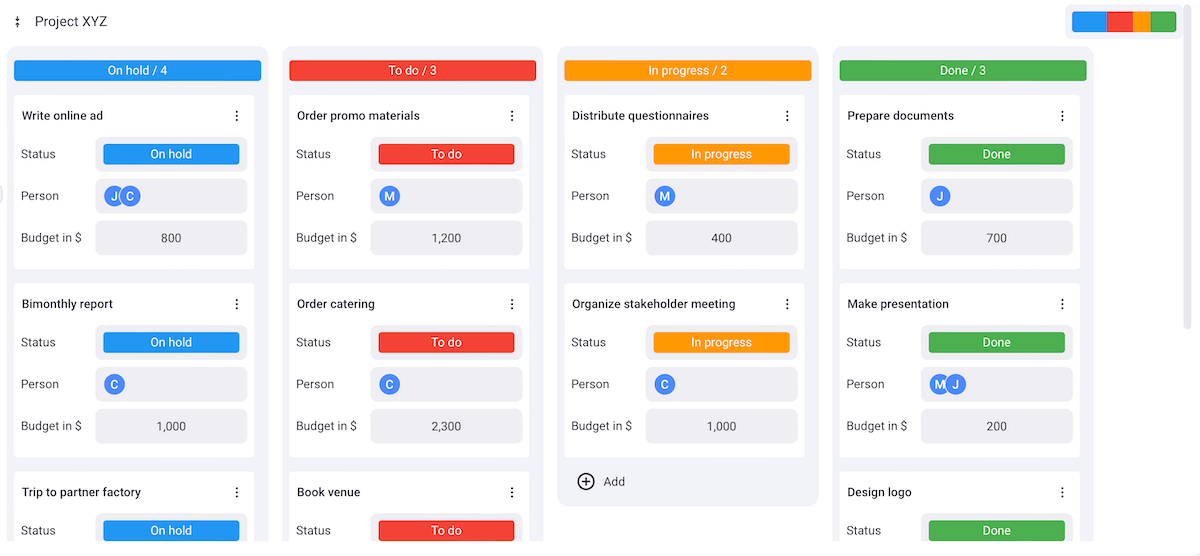
In addition, the widely known Gantt chart view can help prevent a cost overrun thanks to the clear visualization of the timeline, showing completed and pending tasks, and illustrating potential task overlaps.
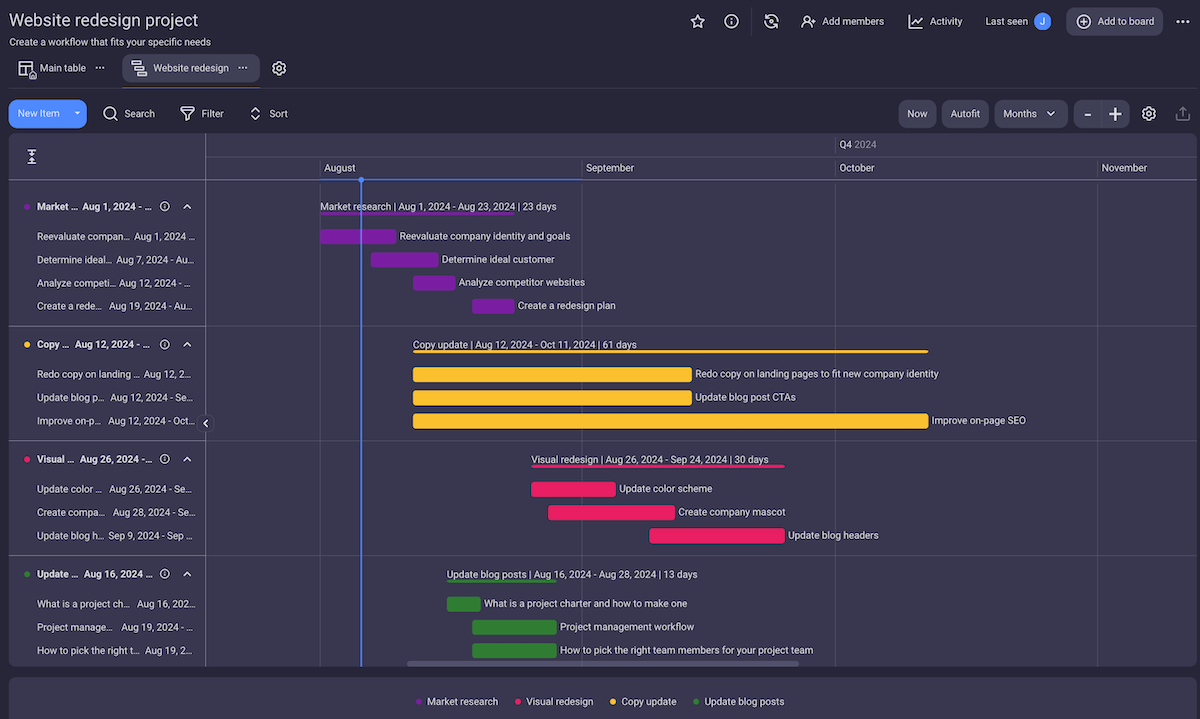
Keep track of your projects’ progress with Plaky
4. Work with trusted external collaborators
Some projects require external contributors because they have expertise that isn’t available in-house, offer advanced tools, help handle non-core activities, etc. But, when dealing with project procurement or similar activities, you must work with trusted third parties.
You can check if you can trust an external collaborator by assessing their previous projects, verifying their licenses, and observing the level of professionalism in your interactions, especially if you’re collaborating for the first time.
Working with reliable external partners contributes to effective cost management since:
- They deliver on time without quality issues,
- A history of successful projects makes it easier to predict costs, and
- Dependable partners are willing to address issues transparently and swiftly.
Additionally, collaborating with trusted partners means you don’t have to worry about compromising safety when granting them access to project data and documents, which is usually necessary.
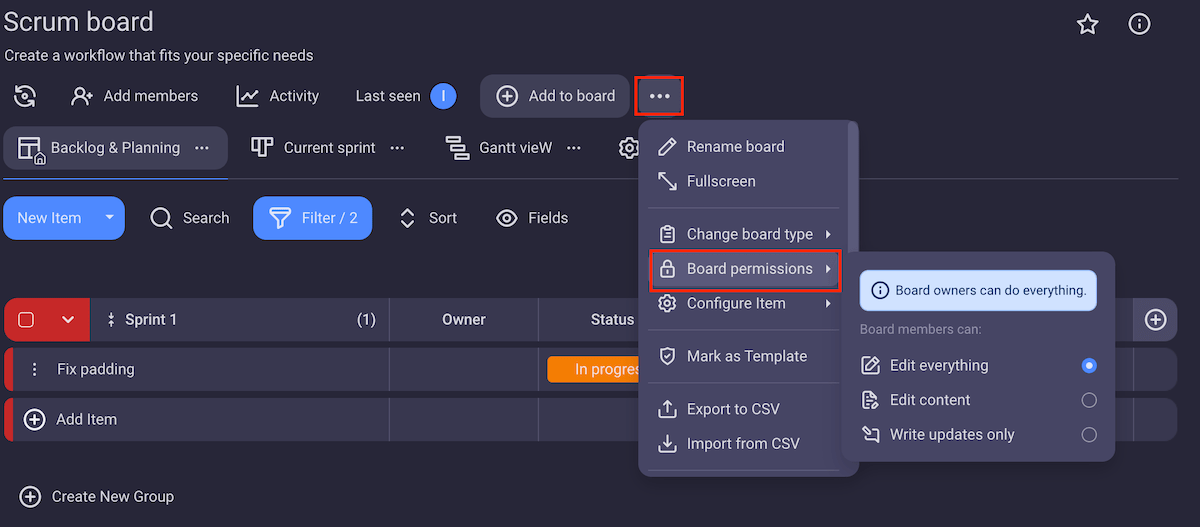
5. Foster open communication
Finally, remember that promoting open communication with the project team and stakeholders is always a must and can even reduce the chance of a cost overrun by:
- Encouraging team members to report potential problems early,
- Fostering a collaborative approach to addressing issues,
- Securing a shared understanding of budget requirements and constraints, and
- Providing a platform for feedback on cost-saving measures.
Overall, efficient communication in project management ensures that all parties are well informed and aligned regarding project costs.
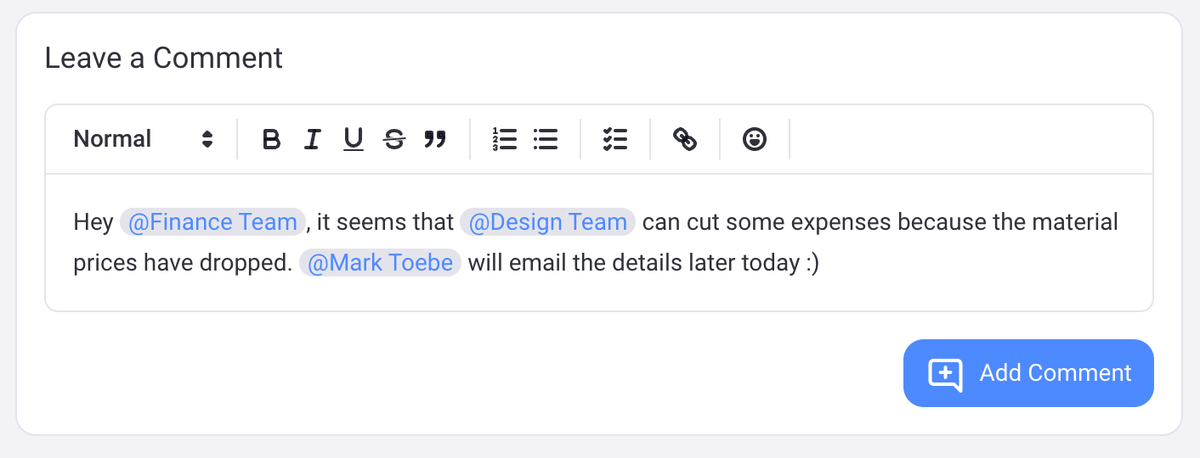
Nowadays, many companies use team collaboration software to assign tasks, share relevant links and documents, exchange remarks and ideas, receive notifications about assignments, and more.
This provides them with a secure space where everyone can stay connected and informed.
Elevate team collaboration with Plaky
Warning signs and common causes of cost overruns
Here are some signs you might be heading toward a budget overrun:
- Overly optimistic cost estimates,
- Frequent budget adjustments,
- Uncontrolled project scope growth (scope creep),
- Dipping into contingency funds more than expected,
- Frequent mistakes and rework, and
- Failure to meet deadlines.
Knowing this, we can infer that the following points are the typical causes of cost overruns:
- Lack of a thorough project budget outline,
- Serious omissions in project design,
- Poor risk management,
- Regulatory changes, economic factors, and similar external causes,
- Inadequate deliverable tracking,
- Inefficient communication, and
- Lack of regular project monitoring and control.
Dealing with project cost overruns
If it’s too late for preventative measures because you’re already facing a cost increase — don’t panic, as you can still turn things around.
Consider the following tips.
1. Identify the main source
Pinpointing the leading source of a cost overrun is essential for managing it and getting the project back on track for several reasons.
To begin with, knowing the exact cause lets you implement specific corrective measures rather than wasting time and resources on broad, unfocused efforts. This experience will also help you prevent similar problems from arising again.
Moreover, identifying the main source allows you to:
- Reprioritize,
- Adjust forecasts,
- Cut expenses where possible, and
- Allocate resources more effectively as the project progresses.
Detecting the main issue tends to be quite simple — just look at project data, consult your team, and seek exceeded budgetary limits.
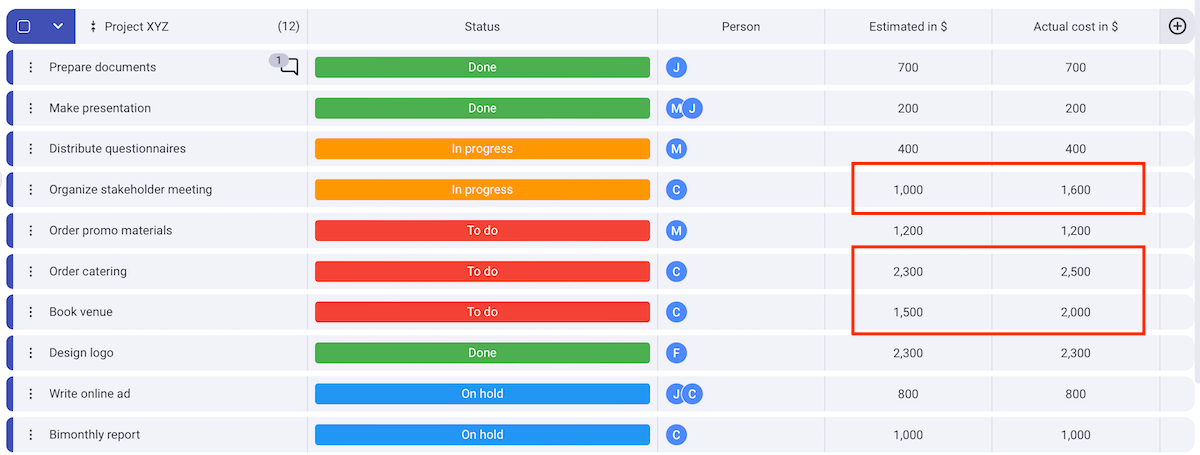
2. Negotiate with stakeholders
By discussing cost management ideas with stakeholders, you can explore alternative solutions and ensure that everyone is comfortable with the necessary adjustments.
This approach has numerous benefits, such as:
- Gaining more flexibility,
- Potentially extending the timeline,
- Maintaining or even enhancing trust, and
- Potentially securing additional funding.
To negotiate with success, the project manager needs to prepare thoroughly — understanding the project details and the nature of the budget overrun is crucial.
Also, keep stakeholder interests in mind and tailor your negotiation strategy to address their priorities. Remember to listen to their questions and suggestions and frame the negotiation as a team effort.
3. Improve efficiency and strengthen controls
Boosting efficiency and strengthening controls creates a more disciplined environment, allowing you to get closer to the original project budget again. This results in:
- Reducing unnecessary expenses,
- Accelerating project workflows,
- More precise tracking of costs and overall progress,
- Preventing scope creep, and
- Better decision-making moving forward.
The way to achieve this may differ from project to project, but most commonly, it means:
- Searching for bottlenecks,
- Automating tasks where possible,
- Monitoring team workloads, and
- Having status reports and meetings more often.
By doing all of this, you get a chance to analyze past performance in detail and gain valuable insights.
Manage budget overruns in Plaky
Say goodbye to cost overruns with Plaky
Facing a (potential) budget overrun is no joke, but you can get back on course with the right attitude and the right tool to assist you — a tool like Plaky.
Our centralized project management software lets you:
- Keep track of unlimited projects and tasks,
- Create to-do lists to simplify work,
- Assign tasks to facilitate task delegation,
- Filter tasks by priority, status, deadline, etc. for easier navigation,
- Leave comments and @mention users for enhanced collaboration,
- Use custom fields to ensure flexibility,
- Visualize data in a variety of ways for better analysis, and much more.
What may come particularly handy when dealing with budget matters is the summary row feature, which shows you the total amount available or spent.
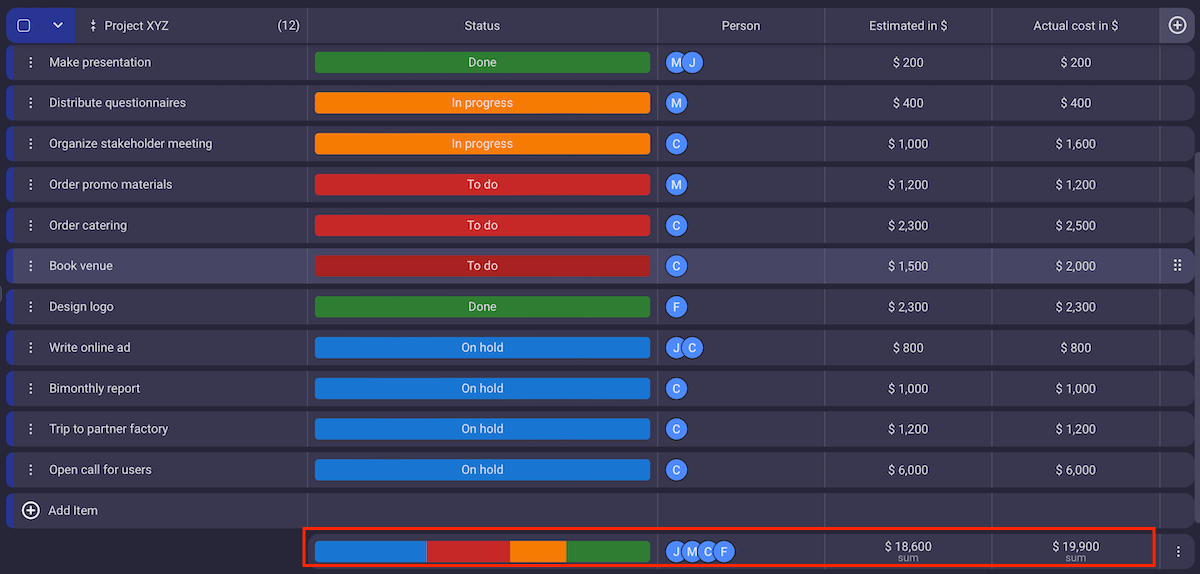
Another pro? The affordability!
Plaky’s free plan is excellent, but if you need more, the additional features available in its paid plans will make your project management even smoother.
That said, don’t expect to break the bank here. Besides being powerful yet user-friendly, Plaky’s pricing is one of its biggest strengths — especially for those of you who are trying to reduce expenditures in any way you can.
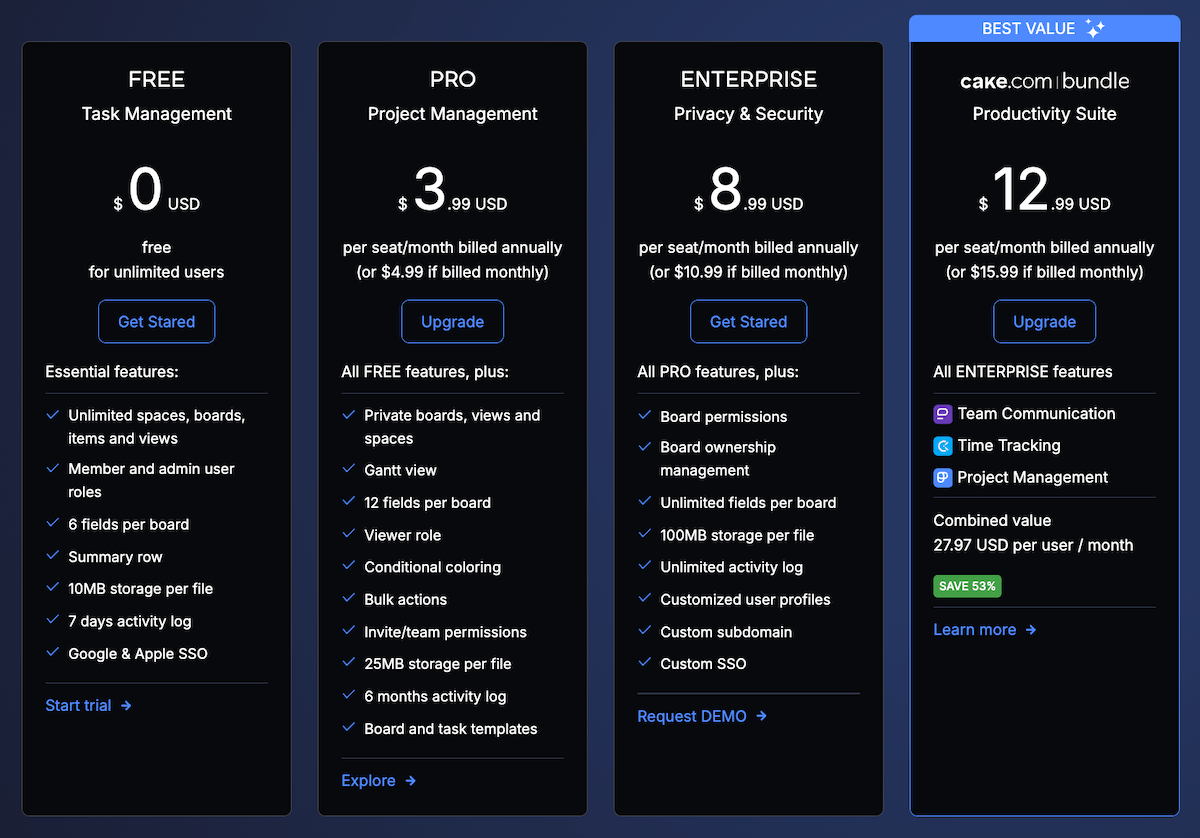
Put an end to your cost overrun struggles and track projects with ease — sign up for Plaky today!


